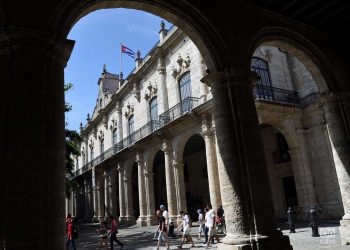San Cristóbal de La Habana´s half-millennium
It was the last of seven townships founded in Cuba during the second decade of the sixteenth century. In a short time, thanks to its port and strategic geographic location with easy access to the Gulf Stream, it became one of the most important cities in the Americas, along with Mexico City and Lima. Initially, and for centuries thereafter, Havana was the Spanish crown’s largest shipyard. Later it was a convening point for the Royal Fleet’s navigation to the peninsula, given the prevalence of corsairs and pirates in the Caribbean Sea. Dozens of ships loaded with gold, silver and treasures from South and Central America would dock for long stays in Havana until, once united, they would sail to Spain escorted by heavily armed ships. These circumstances turned Havana into a hub for trade, lodging, and provision of food and water, in addition to gambling dens and other distractions for sailors and travelers. View of the Faro del Castillo de los Tres Reyes del Morro. Photo: Otmaro Rodríguez It was necessary, then, to fortify the town to avoid the ravages of looting and fires that it was subjected to during the continuous pirate attacks. The Castillo de la Real Fuerza,...



